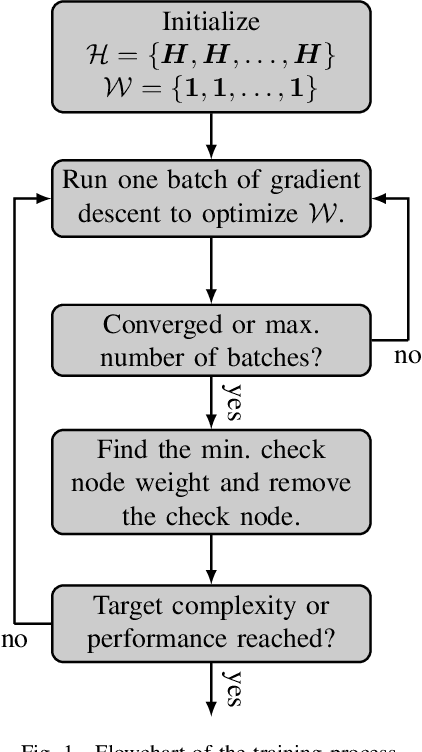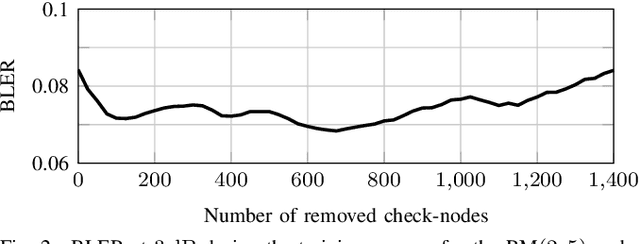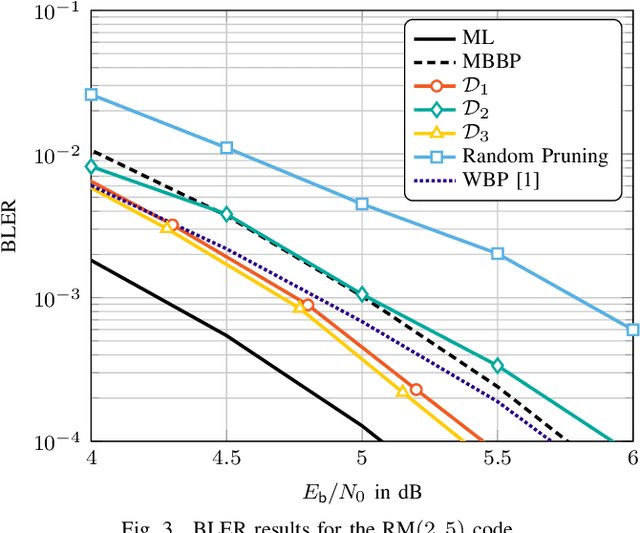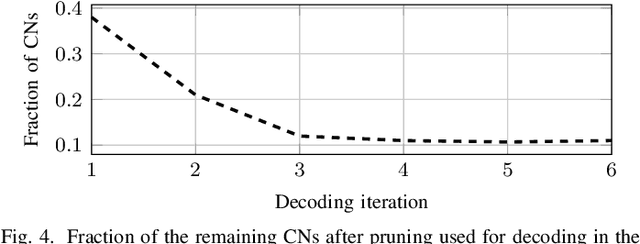Andreas Buchberger
Pruning Neural Belief Propagation Decoders
Jan 21, 2020



Abstract:We consider near maximum-likelihood (ML) decoding of short linear block codes based on neural belief propagation (BP) decoding recently introduced by Nachmani et al.. While this method significantly outperforms conventional BP decoding, the underlying parity-check matrix may still limit the overall performance. In this paper, we introduce a method to tailor an overcomplete parity-check matrix to (neural) BP decoding using machine learning. We consider the weights in the Tanner graph as an indication of the importance of the connected check nodes (CNs) to decoding and use them to prune unimportant CNs. As the pruning is not tied over iterations, the final decoder uses a different parity-check matrix in each iteration. For Reed-Muller and short low-density parity-check codes, we achieve performance within 0.27 dB and 1.5 dB of the ML performance while reducing the complexity of the decoder.
 Add to Chrome
Add to Chrome Add to Firefox
Add to Firefox Add to Edge
Add to Edge